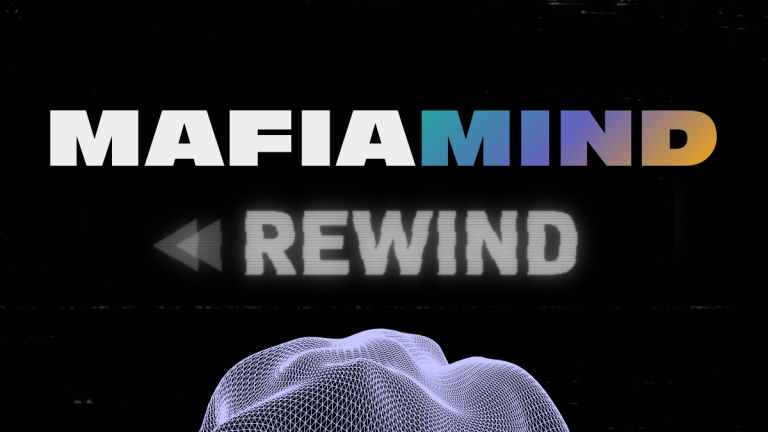

“In my childhood, she was real. Somewhere between that and adulthood, I came to understand, she is not real,” Jones says about the figure who was developed by three white male software tycoons. “So really, the first conscious thought that I had about Mavis Beacon was: Why was she Black?” - Jazmin Jones, Director of SEEKING MAVIS BEACON
Jones’ directorial debut Seeking Mavis Beacon, a desktop documentary that premiered at the 40th edition of the Sundance Film Festival, is brimming with critical questions about Black representation, digital security, and ethics of AI and technology. The doc follows Jones and her collaborator Olivia Ross as they search for Renée L'Espérance — the real woman behind the image of Mavis Beacon.
Alternating between personal footage of Jones braiding hair while contemplating her findings to cinematically-charged madman mappings of connections between Renée and Mavis, visually the film is entrancing. Jones has a natural spotlight on screen, often smoking and almost always fitted in a bright outfit and red braids. A hybrid combination of filmed footage and tech edits transports viewers into the algorithm on Jones and Ross’ desktop. The film is a creative love child between a millennial, Jones, who is the anchor and keeps the work grounded, and a Gen-Z, Ross, who is the engine and often progresses the plot.
A hotline prompting people to share their experiences with Beacon slowly expands the film from focusing on the filmmakers’ personal relationship with the icon to a connected web of impact, spanning across states and strangers. One woman shares how, without the program, she wouldn't have been able to keep her job. Another accounts on the power of seeing a dark-skinned Black woman as an authority figure.
Despite her significance, Renée L'Espérance was only paid $500 for her image. She received no residuals, despite being the face which was instrumental in the worldwide selling of more than 10 million copies of the software.
![]()
In a later version of the software, the programmers edited her photo to appear chubbier and etched with lines. L'Espérance sued for misuse of her image, to which the creators of the program retaliated by digitizing her image, without her consent.
“Silicon Valley’s answer to be like, ‘We did this person Renee L’Esperance dirty and misrepresented her. Let’s just make an avatar! Let’s use AI to make something else that can never sue us’,” Jones says.
Ross expanded on this, “Instead of including and compensating real people, it’s inventing fake people that you can extract from ceaselessly, who will never be angry with you and never demand more or dignity. It’s like, ‘Let’s just make robots to fulfill these roles instead and have them say the things we want them to say’.”
The complex nature of consent in a digital world is explored, as Mavis Beacon and Renée L'Espérance exemplify how capitalism exploits and extracts from Black identities. What starts as a curious venture to connect with a childhood hero, transcends into an entangled investigation that explores digital consent and exploitation within the tech industry.
The documentary also highlights the problematic nature of AIs and robots, like Siri and Alexa, being women. For Black women specifically, there is a timeless profiteering of supporting and serving non-Black people, only to assist in another person’s success with no credit. Although the doc focuses on Renée’s experience, the complexity of consent in a digital world expands beyond Mavis Beacon.
“I was seeing this weird trend of Lil’ Mikquela and these avatars like FN Meka, where you have companies of white men making avatars of Black people to make them lots of money,” Jones says. “To me, that felt like a direct byproduct of products like Mavis Beacon Teaches Typing.”
Although the film investigates the layered risks and rewards of the digital world, the pair also is hoping to provide solutions. At the Q&A following the Sundance screening, Jones informed the audience that they are working on a remedy for anyone feeling concerned about the amount of information they were able to uncover about Renée.
While Jones describes herself as the type of person who feels like there’s nothing she can do and “the FBI agent [who] can see everything,” she says Ross balances that perspective out.
Ross, who was only 19 at the start of her collaboration with Jones, is an impressively internet savvy, cyberfeminist who calls herself a “cyber doula” , referring to the caretaking work she does to guide others through navigating the internet.
 |
“We’re so conditioned to not ask any questions and to just go along with very strange, coercive guidelines that are set in place by social media companies and media companies in general. The commercialization of the internet has become so commonplace. If a prompt on the internet is free, it’s because you are the product.” |
Their next step is to make a toolkit that promotes digital hygiene, empowering people with the knowledge and skills to help scrub their digital footprint.
Jones and Ross don’t pretend to have all their shit together. The film is woven together with frustrated tears and roadblocks, as the pair is challenged with white men with a savior complex ruining their space, conflicting recollections and dead ends. Unique in its vulnerability, viewers scour through crumbs of evidence with the pair desperate to find a lead and feeling the adrenalized excitement at uncovering new information. When they connect with Renée’s son, it feels like a triumphant breakthrough for both the filmmakers and audience. But fairytale endings don’t always pan out the way we want.
“There’s so much more to Renee than Mavis Beacon,” Jones says. “That was one afternoon of her life, for $500 bucks.”
![]()
Ultimately, Jones and viewers realize that Renée doesn’t want to tell her story. The brief moment of selfishness, as a viewer eager to hear from Renée herself, dissolves into a peaceful revelation: her silence is an act of self-preservation. For Black women, who face immense societal pressure to exist in a way that is deemed decent, docile and digestible, to choose to not be a part of — to not exist in someone else’s self-appointed space — is an act of radical liberation. Especially in the digital age, when everything seems eternal and endless information feels traceable and tangible, it’s a choice of empowerment to choose silence.
“The inspiration I source from her now at the end of the project is taking control of your image,” Jones says. “If you don’t like the conversation that you’re being put in, you don’t have to engage in the conversation.”
Seeking Mavis Beacon will be showing at the upcoming 2024 True/False Film Fest.






.png?resize=768x0)